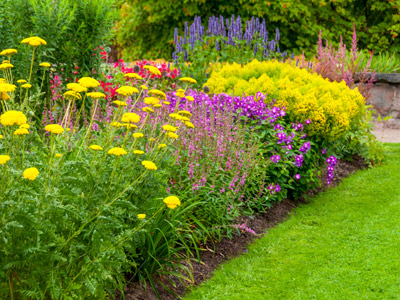
Plants produce their own food by photosynthesis and are known as producers.
Food Chains and Webs 01
An enjoyable way to test your knowledge about producers and consumers. What is an omnivore?
Between the ages of 11 and 14 our quizzes are invaluable.
Scroll down to play the quiz
1 .
Plants are:
decomposers
herbivores
primary consumers
producers
Plants produce their own food by photosynthesis
2 .
Secondary consumers are usually:
carnivores
decomposers
herbivores
producers
They can also be omnivores
3 .
Omnivores eat:
animals and plants
only animals
only decomposers
only plants
Herbivores eat plants. Carnivores eat animals (meat)
4 .
Which of the following do you think is the odd one out in terms of their diet?
Sheep
Lion
Rabbit
Elephant
The others are herbivores, in other words they are all primary consumers. A lion is a carnivore and is a secondary consumer (or higher, depending on what it has just eaten)
5 .
Which of the following shows a correct food chain?
Barn Owl → Dormouse → Barley
Dormouse → Barley → Barn Owl
Fox → Rabbit → Grass
Grass → Rabbit → Fox
A food chain always starts with an organism that can photosynthesise
6 .
In the following food chain 'lettuce → rabbit → hawk', the rabbit is:
the primary consumer
the producer
the secondary consumer
the top carnivore
A food chain ends at the top carnivore
7 .
In the following food chain 'grass → grasshopper → rat → snake → hawk', the rat is:
a herbivore
the primary consumer
the secondary consumer
the top carnivore
It eats grasshoppers which are the primary consumers of this food chain
8 .
In the food chain 'grass → grasshopper → rat → snake → hawk', the hawk is .......
the primary consumer
the secondary consumer
the tertiary consumer
the top carnivore
Nothing eats the hawk - hunting and catching it would take more energy than the predator would get from eating the hawk
9 .
Rabbits and slugs eat lettuce. Hedgehogs eat slugs. Foxes eat rabbits. The rabbits get poisoned and many die. Which of the following is most likely to happen first?
Foxes and hedgehogs will decrease in number
Foxes and hedgehogs will increase in number
Slugs and foxes will increase in number
Slugs will increase in number
The slugs do not have as much competition when the rabbits have died so there is more slug food. More food means that a larger population of slugs can be supported in the food chain
10 .
Which of the following statements is NOT correct?
Food chains always start with an organism that can produce its own food by photosynthesis
In a food web, arrows can point in any direction
Primary consumers are herbivores
Secondary consumers can be carnivores or omnivores
The arrows always show which way the energy is passing. In other words, they will always point towards the animal that is doing the eating and away from whatever is being eaten
**Unlimited Quizzes Await You! 🚀**
Hey there, quiz champ! 🌟 You've already tackled today's free questions.
Ready for more?
Ready for more?
🔓 Unlock UNLIMITED Quizzes and challenge yourself every day. But that's
not all...
not all...
🔥 As a Subscriber you can join our thrilling "Daily Streak" against other
quizzers. Try to win a coveted spot on our Hall of Fame Page.
quizzers. Try to win a coveted spot on our Hall of Fame Page.
Don't miss out! Join us now and keep the fun rolling. 🎉
**Unlimited Quizzes Await You! 🚀**
Hey there, quiz champ! 🌟 You've already tackled today's free questions. Ready for more?
🔓 Unlock UNLIMITED Quizzes and challenge yourself every day. But that's not all...
🔥 As a Subscriber you can join our thrilling "Daily Streak" against other quizzers. Try to win a coveted spot on our Hall of Fame Page.
Don't miss out! Join us now and keep the fun rolling. 🎉







